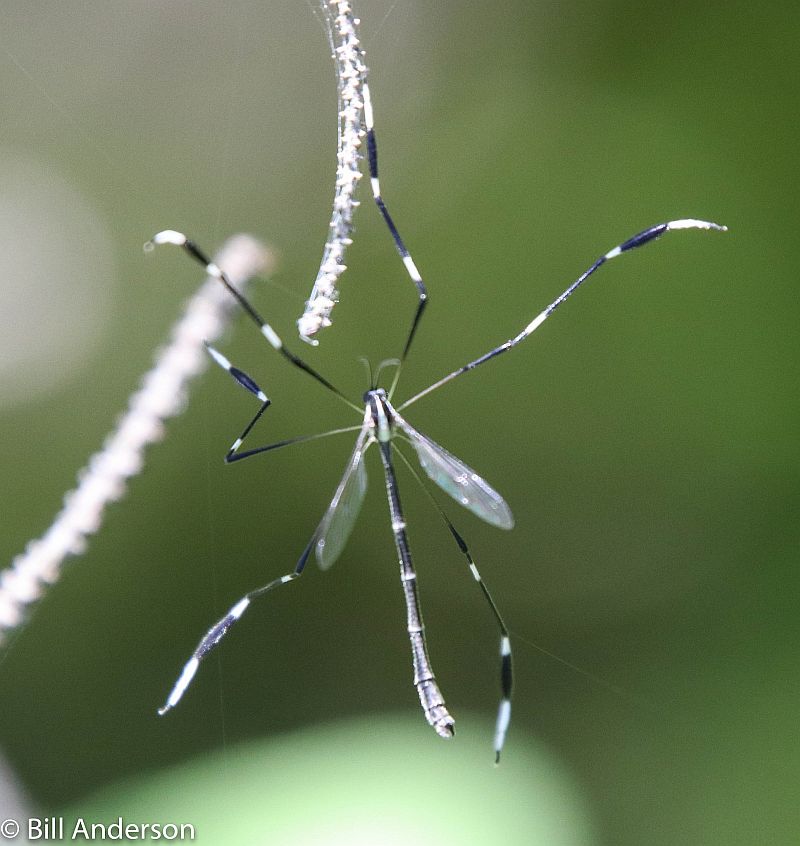
This phantom lives in freshwater wetlands from the Atlantic coast to the Rocky Mountains. Gliding on the shady edge of dense vegetation he usually goes unseen. It takes practice to notice a phantom crane fly.
I first learned about phantom crane flies (Bittacomorpha clavipes) in Newfoundland when our guide David Trently pointed one out. “There it is.”
I couldn’t see it. “Where is it? How big is it? What should I look for?” I was so frustrated! The bug was flying right in front of me but he was invisible.
The phantom landed and Bill Anderson took his picture. I followed Bill’s camera lens and found the fly. Aha!
When the phantom took off, I followed him with my eyes as he floated among the shadows. Here’s a video that shows what that’s like. (Note: If you don’t like snakes turn off the video before the 2:20 mark to avoid seeing one.)
Phantom crane flies can move like this because they’re very lightweight, their long legs are hollow, and their tarsomere (foot segments) are swollen and filled with air. They spread their legs to catch the breeze and barely flap their wings.
Their long crane-like legs make them phantoms in the air.
Read more about phantom crane flies in this article by the BugLady at University of Wisconsin, Milwaukee.
(photo by Bill Anderson; click on the caption to see the original. video by Chromatophone Productions on YouTube)